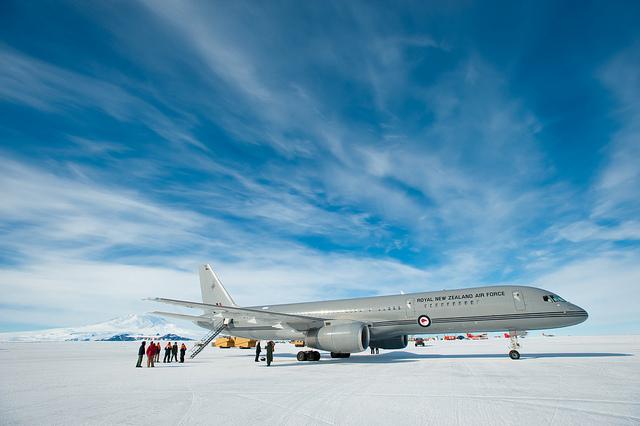Small number, big signal: New Zealand finds some extra defence money
Posted By Robert Ayson on May 1, 2014 @ 14:33
The New Zealand government’s decision to commit an extra A$95m per year to defence for the next five years would scarcely rate a mention if the same had happened in Australia. The total of that extra investment would barely cover the up-front costs of two Joint Strike Fighters (or perhaps just one if we also include long-term costs). But in Wellington it was news enough to warrant a media release [2] from pleased defence minister, Dr Jonathan Coleman, ahead of the 15 May budget.
The extra amount represents about 5% of New Zealand’s annual defence expenditure. That’s hardly a revolution. But it signifies an important shift in the way that National Party-led coalition governments under John Key’s leadership have approached this portfolio. To know why this is the case, a wee bit of recent history is required.
In 2010, the first Key government issued the country’s first Defence White Paper [3] in more than a decade. (It was the first proper one in nearly 20 years if we treat the skinny 1997 version as little more than a topping up exercise). And a well-argued document the 2010 paper was too. From a capability standpoint it spelled out the government’s core objective: find room for future administrations to retain and replace New Zealand’s big three items—maritime patrol aircraft, the heavy lift Hercules, and the frigates.
But getting there involved drawing up a hard bargain. The New Zealand Defence Force (NZDF) was given approval to keep its major capabilities. It could also bring on new ones that were already moving through the system thanks largely to a series of important purchases engineered by previous Labour Party-led governments. In exchange, the NZDF was required to find over A$300million in internal savings that could be redirected to ‘front-office’ military activities. Those savings had been identified in an external review [4] that seemed to find large room for savings wherever it looked. That was a surprise because no one from overseas ever accuses New Zealand of pushing the boat out on defence expenditure.
There followed a difficult period for the NZDF, which was also committed to a number of long-term overseas operations, including in Afghanistan where the lives of New Zealand personnel were being lost. The attempt to achieve those radical efficiencies, and in particular the idea of civilianising large numbers of military positions to save money, had significant effects on defence force morale and public opinion. A somewhat scathing audit report [5] would later raise serious questions about this part of the reforms.
The new funding, which will be earmarked for the operational part of the defence budget, can be read as the Key Government’s decision to draw a line under that risky experiment. In his press statement, Dr Coleman expressed satisfaction with the efficiencies that had been achieved, but those are only about half of the initial target. Instead, a mid-point defence review (half way between White Papers) had shown that extra funding was required.
Interestingly, the release cites the NZDF’s busy operational tempo as the main justification for this initiative. But there’s something of a barn door closing after the horse has bolted here because New Zealand’s main involvement in three long-term missions—in Timor Leste, Solomon Islands and Afghanistan—has now finished. And it was an intriguing call to cite New Zealand’s involvement in the hunt for the MH370 as one of the reasons for such a busy agenda for the NZDF, because the next day Dr Coleman confirmed that the New Zealand patrol aircraft was returning home [6].
Nonetheless, a greater sense of reality about defence spending appears to have set in. Even more of that will be required before long as the decision points about New Zealand’s three big capabilities approach. To be sure, we aren’t talking about the expensive triad of JSFs, submarines and air-warfare destroyers. New Zealand doesn’t face the same storm clouds that are building over the Australian defence budget. But what to do with the Orions, Hercules and frigates will be enough to give the writers of the next New Zealand White Paper a challenging assignment.
Robert Ayson is professor of strategic studies at Victoria University of Wellington. Image courtesy of Flickr user NZ Defence Force [7].
Article printed from The Strategist: https://aspistrategist.ru
URL to article: /small-number-big-signal-new-zealand-finds-some-extra-defence-money/
URLs in this post:
[1] Image: https://aspistrategist.ru/wp-content/uploads/2014/05/RNZAF.jpg
[2] media release: http://www.beehive.govt.nz/release/budget-2014-investing-1009m-defence
[3] Defence White Paper: http://www.nzdf.mil.nz/downloads/pdf/public-docs/2010/defence_white_paper_2010.pdf
[4] external review: http://www.defence.govt.nz/pdfs/defence-review-2009-released-value-for-money-report.pdf
[5] audit report: http://www.oag.govt.nz/2013/civilianisation/docs/nzdf-civilianisation-project.pdf
[6] returning home: http://www.3news.co.nz/Orion-returning-to-NZ-after-MH370-search/tabid/423/articleID/342141/Default.aspx
[7] NZ Defence Force: https://www.flickr.com/photos/nzdefenceforce/7444846802/in/photostream/
Click here to print.
